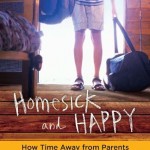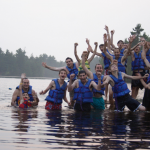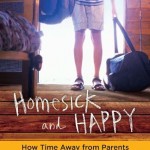I knew that Zach was afraid, but I pushed him to try it anyway. I could write about any number of activities after that introduction. Swim lessons, the Lego Car Rally at MIT, and pepperoni pizza, for example, all required lots of prodding, hand holding, and praying. Zach is often afraid of new experiences, and is only willing to try them after we help him work through his anxiety. Most of the time, it is the right thing to help him do just that. But not always. On Monday, Zach went back and forth several times about whether he wanted to join his sister and brother on California Screamin’, the largest, fastest roller coaster at Disney in California. I was pretty sure he’d be fine, and that afterward, he’d be really proud of himself. So I encouraged him to go and he decided to give it a try. At the last minute, though, he changed his mind. I, unfortunately, did not and I pushed him to go. When he came off the roller coaster, he was just barely holding it together, tears brimming and lower lip quivering. I pulled him to the side and said, “It’s okay, buddy, you can cry.” He collapsed in my arms and cried for a good ten minutes before he could even talk. It was too much, and I had pushed him to do it. I felt like garbage. What kind of mother pressures her kid to ignore his sense of his own limits? I apologized for pushing too hard and tried to help him recover. As I sat on the ground, still holding him, I asked, “Did this ruin the day for you?” “Yeah, it’s ruined now.” “It doesn’t have to be, Zach. You can still have a good time.” “How?” “Well, you can give yourself some time to settle your nerves. Then, instead of focusing your thoughts on this ride, you can focus them on everything else we’ve done today. And you can think of what’s still left to do that you’re looking forward to. Right now, you’re at a 1. And before the ride you were at a 10. You can climb back out if you work at it. Just give yourself some time, and check in on your body to see if it starts to calm down and you start to have more fun.” “Okay, Mom.” For the next hour, he reported back on his recovery. “I’m at a 3 now. And I think that after the Ferris Wheel, I’m gonna be a 4.” By the time we left, he declared the day a ten, and I have rarely been prouder of him. The world, with its onslaught of sensory input, has often taken Zach out at the knees. Recovering from those blows has not been easy. Two months ago, when Jeff and I told the boys that they were going to two weeks of sleep-away camp, Zach broke down in a flood of tears and threats. “I’m gonna lock myself in my room, and you’ll never get me to go!!!!” Taking advice from Michael Thompson in Homesick and Happy, his book about sleep-away camp, we didn’t say to much about his anxiety. We told him that we were confident that he would have a good time, but we weren’t going to try to talk him into thinking it would be great before he even got there. Thompson’s contention is that children’s anxiety about being away from home is natural. Homesickness, even severe homesickness, is natural. Deciding that our children should forgo the magic of sleep-away camp because they will be sad and scared, he writes, is not wise parenting. So off to camp Zach goes. I am hoping that it won’t be like the roller coaster. And I’m trusting that if it is, he’ll recover. Because life, like roller coasters, has a lot of ups and downs. And no matter how I might try, I won’t be able to protect my children from all of the plummets. Without meaning to, I may even push them over the crest on occasion. I’m learning to recover from those times as well. Because, at the end of the day, roller coasters are great rides and I don’t want to miss them.
________________________________________________
This was Part 2 in a four part series on sleep-away camp. Click here for Part 1.












